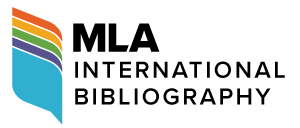Аннотация:
Предметом специального исследования является взаимозависимость языка и речи, языка и мышления, языка и вариативных типов дискурса, оценка и анализ практики дискурсивного письма. Объект исследования – конкретизация гносеологических магистралей, участвующих в объективации как смысла наличного текста, далее дискурса, так и декодировании художественной действительности, в которой контекстуально находится читатель. Автор подробно рассматривает иерархию дискурса, структуру значения в практике дискурсивного художественного письма, складывающуюся сцеплением комбинаций диаметральных смысловых точек в условиях трансформационных диспозиций. Такие аспекты темы как управление читательским сознанием, систематизация художественных форм, имманентные варианты, внутритекстовые отношения, смысловая разверстка, структурация и рецепция концепта, как единицы ментально-фреймовой схемы, регистры дискурсивной практики методологически дополняют работу и раскрывают указанную тему наиболее объемно. Особое внимание в работе уделено анализу дискурсивной парадигмы, которая окончательно незавершенна, стремится к бесконечности пределов и, что принципиально важно, регулируется социально-исторической детерминацией, индивидуально-личностными приоритетами. Наиболее точным, на наш взгляд, в условиях господства компилятивной научной методологии является когнитивный подход. Интерпретация в русле указанного метода близка онтологической коррекции значения, установления множественности коннотаций. Следовательно, алгоритмы когнитивной рецепции художественного дискурса реверсивно вскрывают возможные пути декодирования смыслового объема. Новизна исследования заключается том, что в ней впервые художественный дискурс воспринимается формой связности номинативных корпусных образований со стороны автора и сферой постоянной актуализации смысловых значений со стороны читателя. Это позволяет сделать вывод о том, что художественный дискурс есть иерархически нормированный процесс. Дискурс, в отличие от текста, ситуативно реализует потенциал функциональной раскладки языка. Именно коммуникация проектно манифестирует модель особой взаимозависимости автора и читателя, реципиента и лица, продуцирующего текст. Иерархия дискурса есть небуквальное его сложение, но взаимосвязь парадигмальных языковых форм, функционально существующих в сознании реципиента-читателя. Концептуальная модификация частей сорганизует матричный вид когнитивной модели оценки реальной действительности. Основным выводом проведенного исследования является то, что художественный дискурс необходимо воспринимать кульминационной фазой конкретизации эстетической мысли, манерой изложения, маркером сознания, способом оценки действительного, того, что для автора, реципиента является аксиологически-верным, нормативно-правильным на том или ином историческом этапе развития.
Ключевые слова:
дискурс, художественный текст, автор, реципиент, смысловая парадигма, концепт, фрейм, когнитология, модус чтения, интертекст
Abstract:
The subject of the research is the interdependence between the language and verbal communication, language and thinking, language and various types of discourse, assessment and analysis of a discursive writing. The object of the research is the specification of gnoseological mainlines involved in the process of objectivation of both the meaning of an available text, hereinafter - discourse, and decoding the reader's contextual artistic reality. The author of the article examines the hierarchy of the discourse, the structure of the meaning in the practice of discursive creative writing formed by the combination of diametrical meaning points under conditions of transformational dispositions. Such aspects of the topic as the control over the reader's mind, systematisation of artistic forms, immanent variants, intratextual relations, semantic allocation, structuring and reception of the concept as a unit of the mental frame-based scheme, and registers of discursive practice methodologically complete the research and reveal the topic at the most. The author pays special attention to the analysis of discursive paradigm that is incomplete, tends to have infinite borders and, which is very important, regulated by the social historical environment and individual personal priorities. According to the author, cognitive approach is the most accurate research method providing that the composite research methodology prevails. Interpretation based on the aforesaid approach is close to the ontological correction of the meaning and statement of multiple connotations. Consequently, cognitive reception algorithms of the artistic discourse reversibly reveal possible paths for decoding all the volume of meanings. The novelty of the research is caused by the fact that for the first time in the academic literature the author views artistic discourse as a form of connection of nominative corpus units from the side of the author and the sphere of constant actualisation of meanings from the side of the reader. This allows to conclude that artistic discourse is a hierarchically normalized process. Unlike text, discourse performs the function of the language functional allocation. Communication manifests the model of the special relationship between the author and the reader, the recipient and the person who produces a literary text. The hierarchy of the discourse is not a literal composition but the interplay of paradigm language forms that functionally exist in the reader's mind. Conceptual modification of elements co-organise the matrix of of the cognitive evaluation of reality. The main conclusion fo the research is that artistic discourse should be perceived as a climax of a concretized aesthetic thought, narrative style, mind's marker, and evaluation method, in a word, everything that is axiologically correct for the author and recipient and formally correct at this or that historical stage.
Keywords:
reading modus, cognitive science, concept, frame, semantic paradigm, recipient, author, intertext, literary text, discourse
 Статья опубликована с лицензией Creative Commons Attribution-NonCommercial 4.0 International License (CC BY-NC 4.0) – Лицензия «С указанием авторства – Некоммерческая».
Статья опубликована с лицензией Creative Commons Attribution-NonCommercial 4.0 International License (CC BY-NC 4.0) – Лицензия «С указанием авторства – Некоммерческая». Рус
Рус















 © 1998 – 2024 Nota Bene. Publishing Technologies. NB-Media Ltd.
© 1998 – 2024 Nota Bene. Publishing Technologies. NB-Media Ltd.




